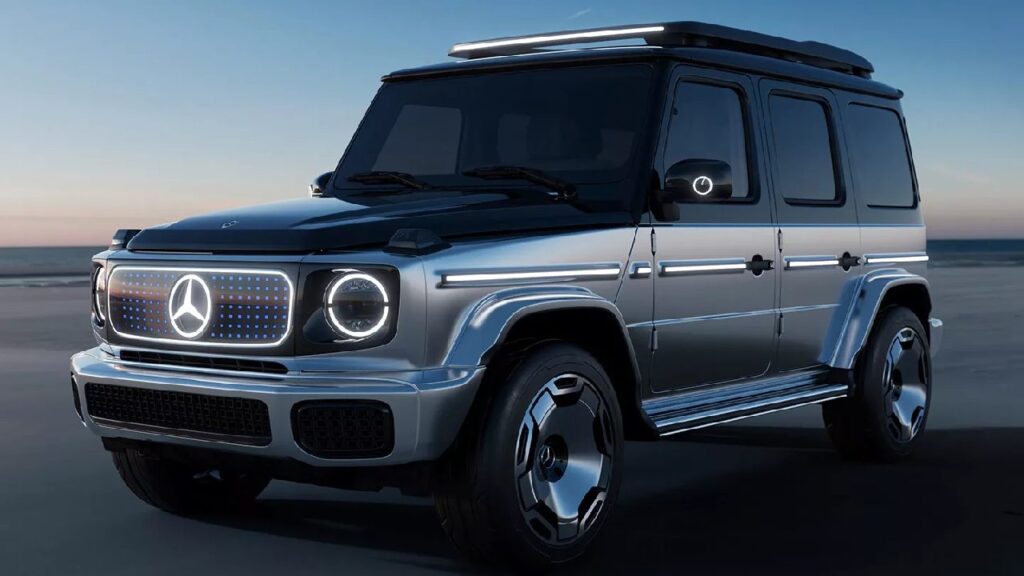Mercedes-Benz has invested in the battery materials startup Sila in 2019 which will supply the newly-developed material for the Li-ion battery for the upcoming Mercedes electric G-Wagon (EQG).
The upcoming Mercedes electric G-Wagon (EQG) is set to come equipped with a range-boosting silicon battery material engineered by Sila. Mercedes invested in Sila back in 2019 with the aim of getting access to future technology to be used in the electric versions of its popular and next-gen EVs. The time has come to reap the benefits of that investment as the new ‘Titan Silicon’ will replace the graphite anodes to boost range, increase the charging speed, and reduce battery weight without sacrificing the cycle life or safety of the battery.
You might also like: Are Stricter Emission Norms Right to Push Mass EV Adoption?

Mercedes Electric G-Wagon (EQG)
The electric G-Wagon has been spied testing in Europe as the plans to launch the iconic SUV are near. Reports suggest that we might see the eco-friendly G-Wagon sometime by the end of 2024 with deliveries set to commence in the first quarter of 2025. The silhouette of the concept and spied versions reveal the oh-so-traditional and orthodox boxy pattern with an imposing and rugged build. Sure, there will be tons of modern EV design cues including a sealed front grille, aerodynamic alloys, plenty use of LED lighting and more.
You might also like: Here’s How Ferrari May Still Sell ICE Cars Post EU Ban of 2035
Titan Silicon
However, the biggest talking point with the electric G-Wagon has to be what lies under the floor. By using Titan Silicon instead of Graphite for the anode of the Li-ion battery, the G-Wagon will boast a charging time of 20 mins for 10-80% which will go further down by the time the manufacturing of the EQG commences. Additionally, the weight of the EV battery will come down by 15% while saving 20% more space. Sila has developed this technology for 10 years with 55,000 iterations taking into consideration optimal battery performance, safety, large-scale manufacturing, long range and improved charging times.
Most importantly, EV-haters would be glad to know that Titan Silicon generates 50% to 75% less CO2 per kWh than graphite during production significantly reducing the EVs’ environmental impact. Sila aims to produce enough material to power 1 million EVs in the next 5 years starting with the EQG. Titan Silicon-powered batteries’ 800+ Wh/L will be the world’s highest energy density cell which will be on offer in 2025 in the electric G-Wagon.
You might also like: 5 New EV Battery Technologies – Aluminium-ion to Niobium
Markus Schäfer, Chief Technology Officer and Member of the Board of Management of Mercedes-Benz Group AG said about the startup, “Sila has come a long way since we established our strategic partnership in 2019. Delivering such a high energy density is a true game-changer and allows us to think in completely new directions when developing future electric cars.” All this makes us hugely excited about the Mercedes EQG.

Pingback: How EVs Perform 360-Degree Turns On The Spot?
Pingback: Prahran Massage
Pingback: car detailing
Pingback: gray zone warfare hacks